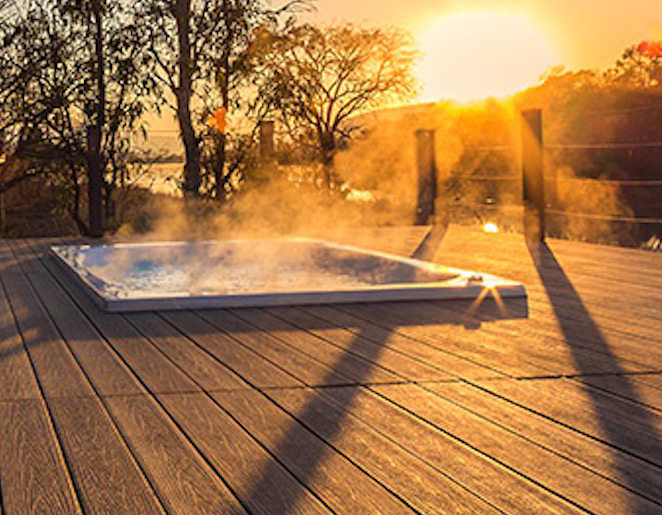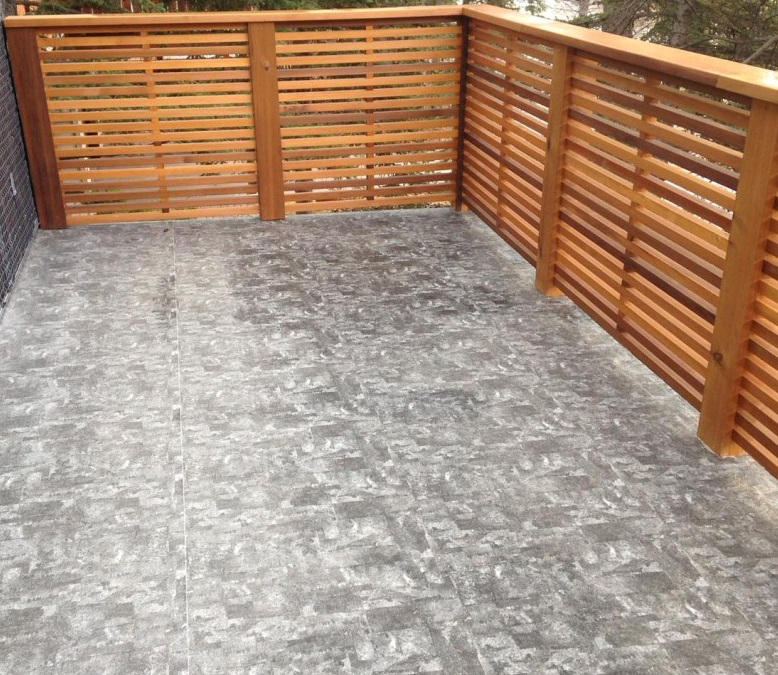In this day and age everyone with a yard wants, or already has, a deck. Fortunately, this has seen the range of decking options to choose from grow. Now it’s not just a question of which hardwood or treated pine material best suits your style and design, but composite materials as well. Composite decking allows for the possibility of a non-wood deck, or nearly. Composite materials are considered to be eco-friendly products made of a combination of recycled plastic and timber fibres. Though they are man made products, composite decking boards are generally designed to look like timber.
There are numerous advantages to using composite decking boards. It is a hard and durable material that, unlike timber, isn’t prone to cracking, warping, or growing mould.

Wont see any mould growing here…
This also makes it maintenance free, and depending on the chosen product, can even be installed without the use of traditional tools and fixing methods. As the popularity of composite products has grown, so has the quality and range of options available. High end composite decking boards now come in a large range of styles and colours and are getting a lot better at impersonating the look and feel of natural timber.

Got timber? All composite baby!
Does that make it the perfect product? Not quite. Composite decking materials tend to be more expensive, particularly boards that closely resemble traditional timber, though it should be noted some of this cost can be recuperated over time due to low maintenance costs. On the flip side, cheaper composite decking tends to have lower grade materials and the end result is often a very unnatural plastic look. In both cases, composite decking can’t be modified or restored. Once it’s installed, that’s it.
With timber you have the option of using cheaper softwoods which are easy to work with and can be painted, oiled, and stained almost any colour imaginable. Then there’s the different hardwood options, which are durable and show off a variety of natural timber colours and wood grains; these too can be stained, oiled and painted. Should you grow bored of your deck’s look, then it’s just a matter of sanding and stripping the timber back and trying something new.

Or you could always replace the old boards with a spa?
The downside in all of this is that timber requires yearly maintenance, particularly softwoods which are particularly susceptible to dampness and UV exposure. Even the most cared for timber deck will slowly degrade in quality over time, which likely means the odd board will need replacing.
Overall, it could just be a matter of weighing up the pros and cons to determine what decking material suits you best, though there will undoubtedly be some who can’t move away from the natural earthly feel that a timber deck gives off. This, it seems, could be the one thing composite materials, no matter how much technology advances, can never truly replicate.

The true timber look is tough to top



No Comments